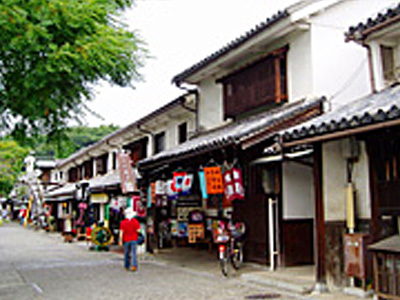Central Kurashiki Area
From sunset until 10:00 pm (9:00 pm October to March), the white walls are lit up with mild evening lights, giving a different impression from the daytime.
The historical architecture in the "Kurashiki Bikan Historical District" has protected status, but at the same time the area is filled with local residents. The streets in this district are real life streets.
The appearance of the district goes back to the Edo period and has no plans to change into the future.
When Kurashiki was designated as the Shogun's land, a Kurashiki magistrate was established. After that, the area developed as the distribution point for products and merchandise that came from the southern part of the Chugoku region.
Along the Kurashiki river by the southern side of Tsurugata mountain, the old main street is lined with grand houses and warehouses with white walls. This street has kept it's original architecture and was designated as an Important Preservation District of Historic Buildings in 1979.
In 1930, to commemorate Kojima Torajiro, a Western-style painter who died the previous year, the Kurashiki entrepreneur Ohara Magosaburo founded the Ohara Museum of Art. This private museum featuring Western art is the oldest of its kind in Japan. The Ohara Museum has expanded its collection to include contemporary art from both the West and Japan, as well as pieces by artists from the Mingei (Japanese Folk-Art) movement. Now the museum is well known to the world as a private museum with its own character, reflecting Japanese culture.








